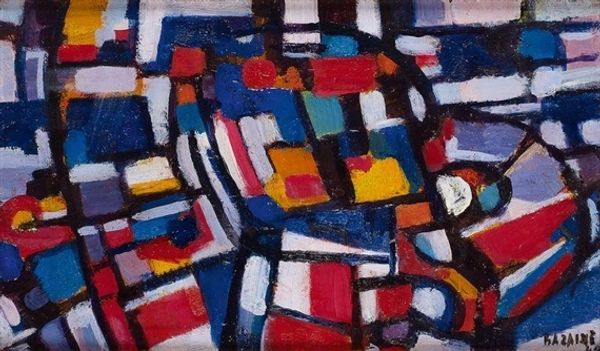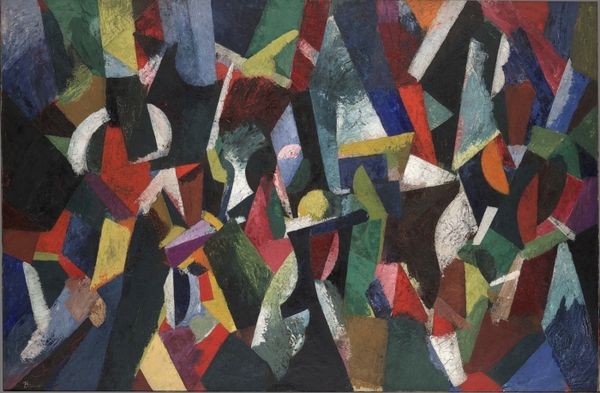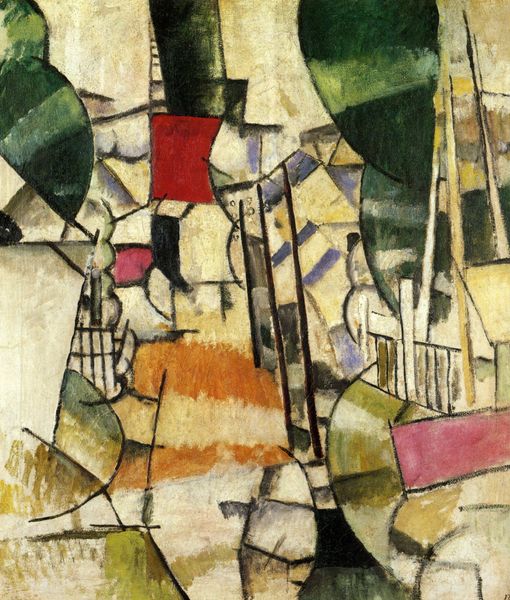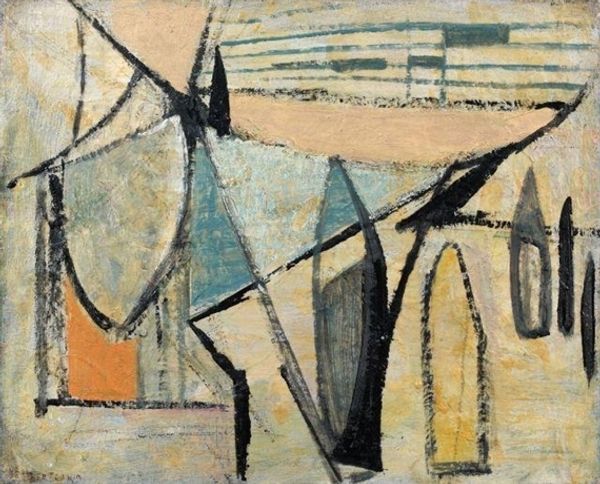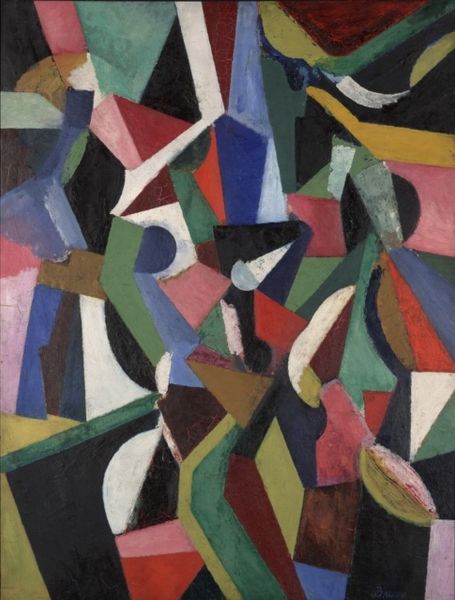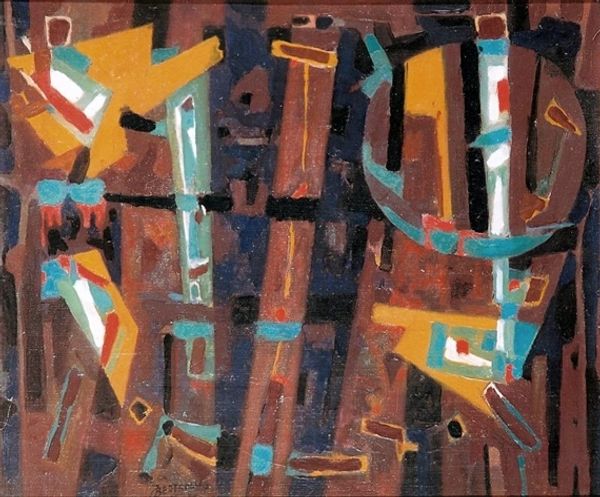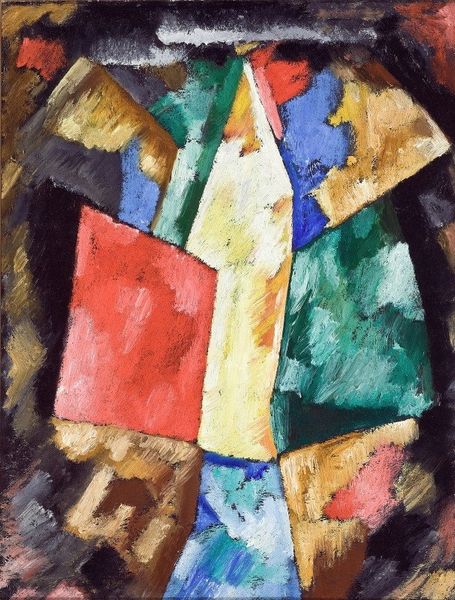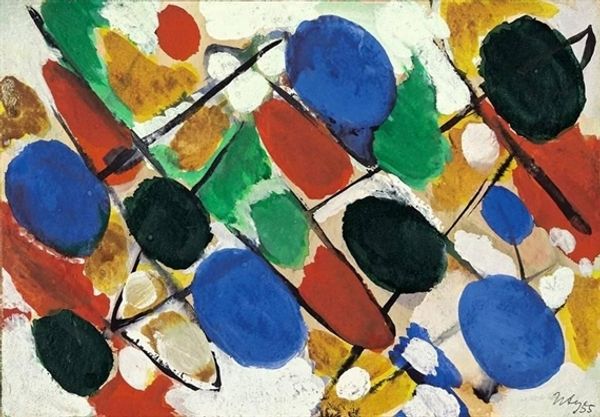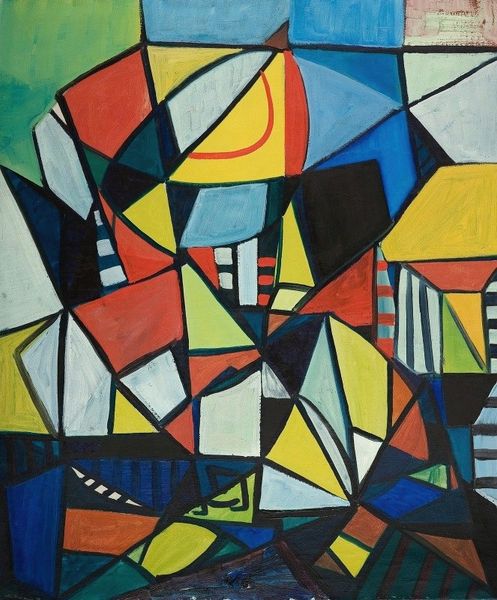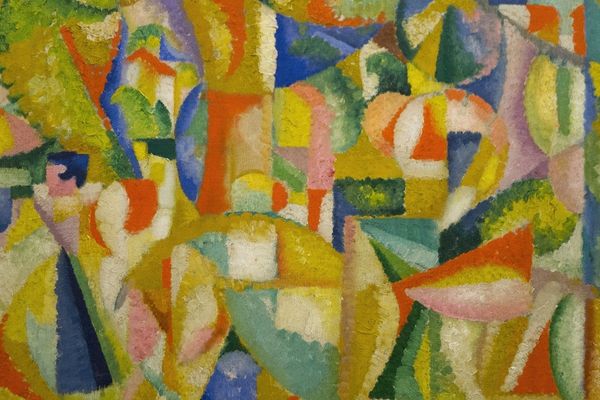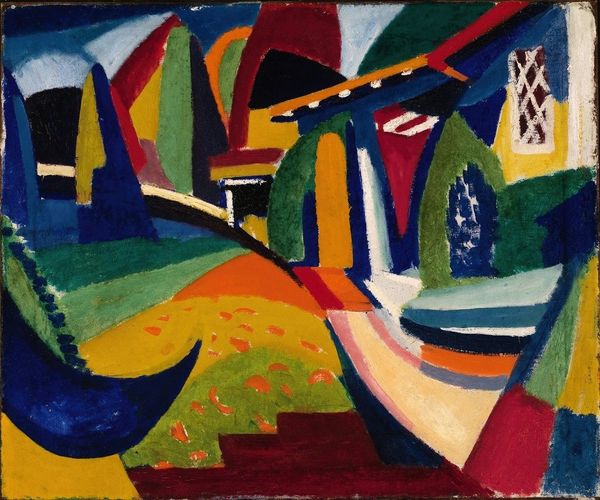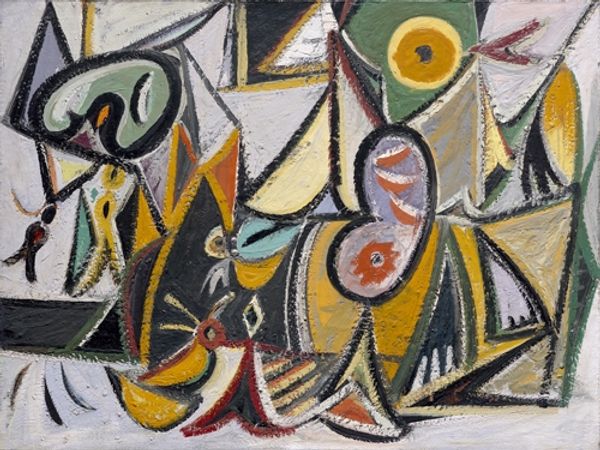
acrylic-paint
#
abstract-expressionism
#
abstract expressionism
#
acrylic-paint
#
form
#
acrylic on canvas
#
geometric-abstraction
#
abstraction
#
line
#
modernism
Copyright: Arthur Pinajian,Fair Use
Editor: So this untitled piece by Arthur Pinajian, painted in 1960 with acrylic on canvas, strikes me as incredibly energetic. The fractured planes of color practically vibrate. What do you see in this work? Curator: I see a potent visual statement from an artist working in a period of intense social upheaval. Looking at the angular forms and contrasting colors, consider the sociopolitical landscape of the 1960s. Abstract Expressionism, while seemingly non-representational, often served as a powerful outlet for anxieties and desires for freedom during the Cold War era. How might Pinajian be using these geometric shapes to express a sense of fragmentation or, conversely, a desire for a new, restructured order? Editor: That's a fascinating point. The idea of fragmented order makes a lot of sense considering the geometric abstraction here. Is there something about the materials too, in terms of political relevance? Curator: Absolutely. Acrylic paint, a relatively new medium at the time, allowed for bolder colors and quicker drying times, aligning with a sense of urgency and immediacy. The energetic brushstrokes speak to a restless spirit, pushing against traditional artistic boundaries. Consider, also, how abstraction itself was a challenge to the established, conservative norms in art and society. Where does that place Pinajian as an activist? Editor: Right. By pushing the boundaries of how and why paintings were made, his art feels like an experiment towards a bold future, with a kind of aggressive optimism! Curator: Indeed, this work encourages us to reconsider the role of abstract art as a reflection and even a catalyst for social change. Pinajian isn’t just making aesthetic choices; he's engaging with the anxieties and aspirations of his time. Editor: I definitely see this painting in a new light now – the social commentary wasn't immediately evident but provides another layer to it. Thanks! Curator: My pleasure, understanding Abstract Expressionism is always a process of connecting it with its social background. It encourages dialogue, just like art should.
Comments
No comments
Be the first to comment and join the conversation on the ultimate creative platform.
